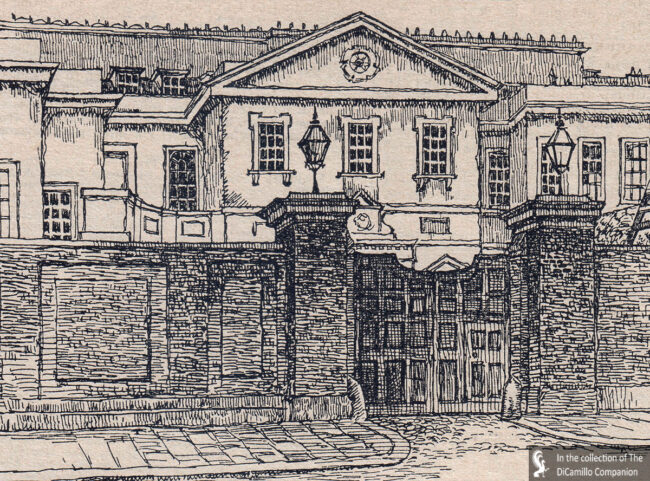
Drawing of the entrance facade from the Aug 26, 1904 issue of "The Daily Graphic"
Built / Designed For: 1st Baron Bingley
House & Family History: Bingley House, as Harcourt House was originally called, was purchased by the 1st Earl Harcourt in 1773 and enlarged and altered by the 2nd Earl Harcourt. Harcourt House came into the possession of the dukes of Portland in the 19th century and served as their London home until the late 19th century. The vast London properties (also called the Marylebone Estate) of the dukes of Portland were managed in the 19th century by the architect Samuel Ware, who also designed the stabling at Harcourt House. There was another, earlier and smaller, Harcourt House on the opposite side (the east side, at No. 1) of Cavendish Square, probably designed by Thomas Archer, circa 1720. In his novel, "Vanity Fair," William Makepeace Thackeray is believed to have based Gaunt House, Lord Steyne's town palace in Gaunt Square, London, on the Harcourt House of the dukes of Portland.
Comments: David Pearce, writing in "The Great Houses of London," on Harcourt House: it "...was regarded as the gloomiest in London..." the "mansion was uniquely and universally condemned throughout its near two centuries of existence as 'dull, heavy, drowsy-looking.'" It was a "strange symbol of aristocratic nuttiness."
Title: Edwardian Great House, The
Author: Airs, Malcom (Editor)
Year Published: 2000
Reference: pg. 78
Publisher: Oxford: Oxford University
ISBN: 0903736306
Book Type: Softback
Title: Biographical Dictionary of British Architects, 1600-1840, A - SOFTBACK
Author: Colvin, Howard
Year Published: 1995
Publisher: New Haven: Yale University Press
ISBN: 0300072074
Book Type: Softback
House Listed: Demolished
Park Listed: No Park
Past Seat / Home of: Robert Benson, 1st Baron Bingley, 1723-31. Simon Harcourt, 1st Earl Harcourt, 18th century; George Simon Harcourt, 2nd Earl Harcourt, late 18th century. William Henry Cavendish-Scott-Bentinck, 4th Duke of Portland, 19th century. Iain Edward Herbert Campbell, 8th Earl of Breadalbane and Holland, early 20th century.
Current Ownership Type: Demolished
Primary Current Ownership Use: Demolished
House Open to Public: No
Historic Houses Member: No